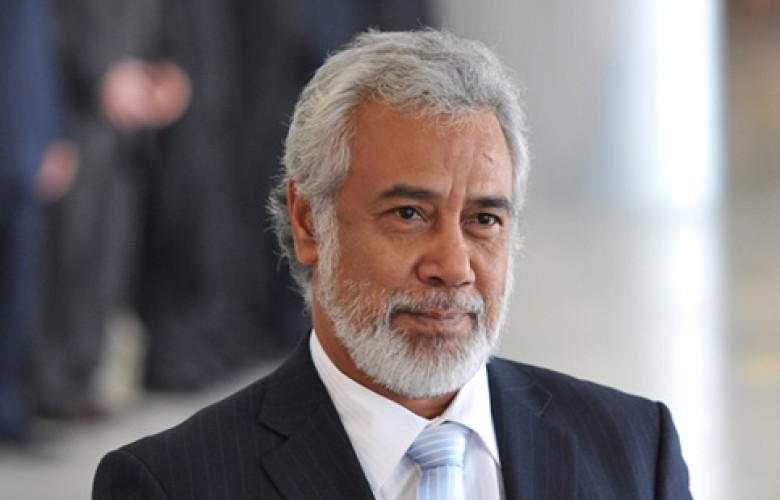Timor-Leste and navigating the ASEAN Way
Flávio Simões
2025-07-24
ASIA
GEOPOLITICS
This article first appeared on The Interpreter, published by the Lowy Institute

Myanmar’s junta has objected to Timor-Leste’s accession to the Association of Southeast Asian Nations. The basis of the opposition is Timor’s perceived interference in their internal affairs. In an era where the foundations of multilateral cooperation are increasingly challenged by geopolitical volatility, the position taken by the junta appears not merely short-sighted but fundamentally misaligned with ASEAN’s long-term strategic aspirations. Indeed, such resistance stands in stark contrast to ASEAN’s greater commitments of regional cohesion, inclusivity, and resilience.
Yet, from a pragmatic point of view, the dynamic may simply reflect the intricate, unwritten, but enduring logic of ASEAN’s internal politics. It is a nuanced new reality that Timor-Leste must continue to comprehend, adapt to, and ultimately master, as it advances towards full membership, now pledged to take place in October.
The journey to accession transcends ticking the technical boxes or meeting the roadmap milestones. It is, at its core, a delicate dance of diplomacy – one that demands a profound appreciation for the subtle artistry of regional engagement, a defining characteristic often referred to as the “ASEAN Way”.
The ASEAN Way functions less as a rigid, rules-based order in the Western tradition and more as a fluid, pragmatic framework. It is shaped by quiet negotiations and face-saving mechanisms. Some may call it an “orientalist” approach – a choreography where dialogue is at times prized over explicit form of diplomacy.
Despite criticisms of its effectiveness, particularly concerning the Rohingya crisis and the overall political situation in Myanmar itself, this characteristic has played a vital role in safeguarding common regional stability and social cohesion amid diverse political systems, post-colonial or cold war legacies, and varied cultural beliefs since its establishment in 1967.
This is, however, not to suggest that Timor-Leste should abandon its principles when dealing with Myanmar, as underscored on its letter sent to the junta recently, or in similar situations in the future. It is to ensure that while Timor-Leste maintains its foreign policy position, it also avoids unnecessary escalation by adhering to a more contextually acceptable conflict resolution mechanism. Timor-Leste can strive to find a more creative solution amid the limitations of the ASEAN Way and ensure that its own bigger strategic objectives are also not jeopardised – which in this case should be the smooth ASEAN accession, implementation of the five-point consensus and the broader regional unity.
As a matter of fact, Timor-Leste is no stranger to such complex diplomatic choreography. Its engagements with ASEAN member states, notably Indonesia and recently the Philippines, have consistently demonstrated its proven capacity to navigate this complex regional milieu. The reconciliation process with Indonesia after restoration of independence, and the Arnolfo Teves deportation to the Philippines, exemplify not only bilateral sensitivities but also the country’s leadership and institutional mastery of such choreography.
Lessons can also be drawn from the region’s own experience. Consider the 2015 Indonesian death penalty saga: while the Filipino convict Mary Jane Veloso was spared execution through the quiet, calibrated diplomacy of the Philippines government, the Australians Andrew Chan and Myuran Sukumaran were not as fortunate. It is a poignant reminder that in Southeast Asia, diplomacy often succeeds best when practiced with subtlety rather than spectacle.
Nonetheless, it would also be naïve to assume that the ASEAN way operates in a vacuum. While dialogue remains the rule of the game, real influence is often shaped by soft persuasion, informal coalitions, peer dynamics, and the strategic calculus of dominant players. Understanding such informal architecture might be an opportunity for Timor-Leste.
One such opportunity lies in the country’s evolving relationship with China. As Beijing deepens its engagement with both Dili and Naypyidaw, Timor-Leste enjoys a potential leverage point that should not be underestimated. It is not beyond imagination for statesmen of the stature of Prime Minister Xanana Gusmão or President José Ramos-Horta to engage in quiet, high-level diplomacy with Beijing, deploying personal rapport to shape perceptions and gently calibrate regional pressure where it matters most.
Despite junta’s objection, Timor-Leste’s accession is not a question of “if” or even “when.” The country has long operated as a de facto member of the ASEAN family. Its continued participation as an observer, the establishment of a clear accession roadmap, the recent summit’s statement, and the absence of outright rejection since its formal application in 2011, particularly from ASEAN’s founding members, all suggest implicit recognition of its rightful regional role. This should render such objection “inconsequential and irrelevant”, as noted by President Ramos-Horta.
Still, the regional game is subtle and layered. Timor-Leste will continue to deal with Myanmar, even more intensively and extensively, especially when it acquires full membership. It will also continue to unquestionably face similar complexities in the future given the present changing geopolitical dynamics. Timor-Leste will need to advance its foreign policy with a refined blend of cultural fluency, strategic agility, and when needed, the power of silent diplomacy.
Photo: Antonio Cruz/ABr, CC BY 3.0 <https://creativecommons.org/licenses/by/3.0>, via Wikimedia Commons
Membership
NZIIA membership is open to anyone interested in understanding the importance of global affairs to the political and economic well-being of New Zealand.